That’s where content marketing swoops in like a superhero, ready to save your brand from the clutches of obscurity. But what is Content Marketing? It’s not merely about filling up a blog; it’s an intricate blend of strategies involving SEO, lead generation, and good ol’ brand storytelling.
It’s about crafting valuable, relevant content that resonates and engages with your target audience on platforms from social media to email marketing.
By exploring this article, you’ll uncover the inner workings of content strategy, how to drive organic traffic, and the all-important metrics like ROI. Get ready to elevate your online marketing game.
From mastering digital presence to understanding the nuances of engagement metrics, this guide will equip you with everything you need for effective content marketing.
What is Content Marketing?
Content marketing is a strategic approach focused on creating and distributing valuable, relevant, and consistent content to attract and engage a clearly defined audience, ultimately driving profitable customer action. It includes blogs, videos, social media posts, and other formats to build trust and loyalty with potential and existing customers.
Why Content Marketing is Important
Benefits for Businesses
Building brand awareness
Creating content is our megaphone, amplifying the voice of our brand. When you deliver consistent, high-quality content, it resonates with your audience. Think of powerful blog posts, infographics, and social media updates.
They don’t just inform; they captivate. The more you produce, the more you stand out, leaving an indelible mark on potential clients. And guess what? This continuous exposure builds brand awareness.
Imagine the random scroll through a social feed interrupted by an engaging video about your brand.
That’s the magic of content marketing – casually inserting your brand into daily routines without seeming intrusive. Suddenly, your brand isn’t just another name – it’s memorable.
Driving customer engagement
Engagement is no longer a mere buzzword. It’s our currency. Great content sparks conversations.
Whether it’s through SEO-optimized articles, interactive videos, or informative podcasts. These mediums provide platforms for your audience to interact, share, and dive deeper.
Every comment, like, or share amplifies your content’s reach. Unfortunately, we can’t buy genuine audience engagement.
It’s earned through valuable content that answers questions, solves problems, or entertains.
Imagine a potential customer binge-watching your video series on their lunch break. They’re not just watching; they’re connecting with your brand.
Enhancing SEO and online visibility
Think of content creation and SEO as peanut butter and jelly – they’re fine on their own but together, they’re unbeatable. High-quality content provides material that search engines love.
Search engine optimization is intertwined with content marketing. Well-written content with meticulous keyword research improves organic traffic.
It’s not just about stuffing keywords but creating depth with LSI keywords and semantic relevance.
From well-crafted landing pages to thoughtful eBooks, diverse content forms drive reach. They engage users at different stages, making your website more visible and favored by search engine algorithms.
Case Studies and Statistics
Successful content marketing examples
Everyone loves a good success story. Brands like Red Bull, go beyond mere energy drinks, creating riveting extreme sports content.
Or how Ahrefs leverages in-depth SEO tools and content to build a loyal user base. These examples show how diverse content strategies can be.
Podcasts, vibrant social media campaigns, and high-value white papers can create waves. Each content type has its own unique impact, helping brands reach varied audience segments.
When done right, it’s like throwing a rock into a pond – the ripples of engagement keep spreading.
Data supporting its effectiveness
Numbers don’t lie. Organizations utilizing content marketing see far-reaching positive outcomes.
Research shows that businesses prioritizing blogging efforts are 13 times more likely to see a positive ROI. Jane Doe’s content marketing strategy resulted in a 40% increase in lead generation.
Moreover, data suggests a 6x higher conversion rate when nurturing leads with relevant content.
Another eye-opener? Websites with video content experience 41% more traffic from search compared to non-video sites. This robust data underscores one thing emphatically – content marketing works*.
Types of Content Marketing
Blogs
Benefits and best practices
Blogging is like storytelling. It’s the backbone of any solid content strategy. Blogs drive organic traffic and enhance your brand’s credibility.
When you dive into the sea of SEO tools and incorporate LSI keywords, you create content that not only informs but ranks.
Consistency? That’s your ally. Regular posts keep the audience engaged and coming back for more.
Best practices? Start with eye-catching headlines. Use clean, readable layouts. Add value by addressing your audience’s pain points.
Sprinkle in relevant internal links and don’t forget a call-to-action (CTA). A content strategy shouldn’t be rigid but adaptable. Always keep an ear to the ground – listen to your audience.
Examples of effective blog content
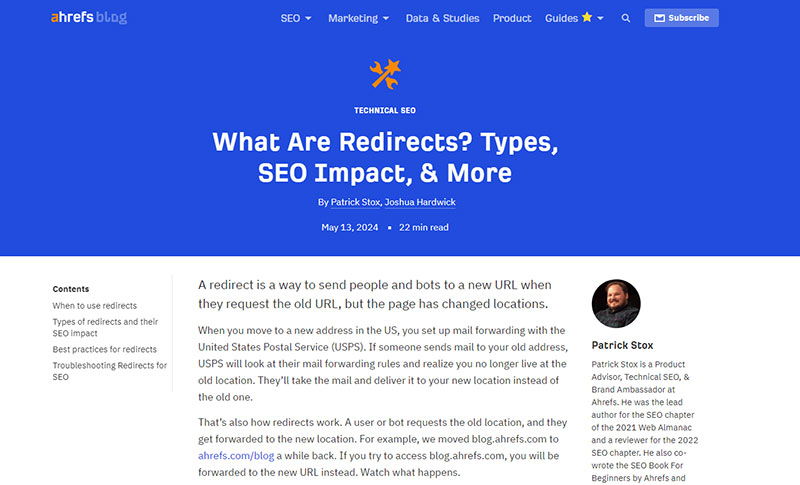
Think about Ahrefs’ blog. Each post is packed with in-depth analysis, linking back to their SEO tool.
Or consider HubSpot. Their content is a treasure trove of inbound marketing insights, keeping readers hooked and educated. These aren’t just blogs; they’re resources people rely on.
Video
Importance and impact of video content

Video content is the future. No—it’s the present. YouTube and Vimeo aren’t just video platforms; they’re search engines for visual learners.
Videos can showcase brand awareness like no other medium. They convert complex ideas into visual narrations that are easier to digest.
The impact? Immense. Even a two-minute explainer video can leave a lasting impression. It drives higher engagement, and Google loves video content.
Tips for creating engaging videos
First, always focus on quality over quantity. A well-crafted 3-minute video beats a 10-minute drag. Utilize SEO optimization for video titles and descriptions. Tools like TubeBuddy help.
Engage from the start. An intriguing hook in the first few seconds keeps viewers watching. Don’t forget CTAs—whether it’s a “like,” “subscribe,” or visiting a landing page. Finally, test different formats: webinars, how-to videos, behind-the-scenes, or even customer testimonials.
Podcasts
Growing popularity of podcasts
Podcasts are booming. There’s something intimate about them. They connect on a different level, filling gaps during commutes or workouts.
They’ve become the modern-day radio but tailored to niche audiences. From business insights to storytelling, there’s a podcast for everything.
Strategies for launching a successful podcast
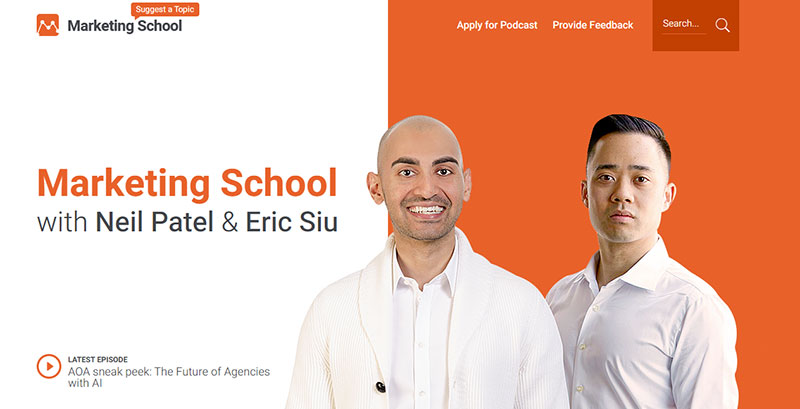
Know your audience—a mantra for any content type. Choose your niche based on keen audience research.
Consistency in release schedules is crucial. Whether it’s weekly or bi-weekly, keep it regular.
Engaging content and strong guest appearances can drive growth. Tools like Audacity help in sound editing while platforms like Spotify and Apple Podcasts ensure broad distribution.
Promote extensively. Utilize your existing channels—email newsletters, social media, and even collaborative influencer marketing.
Social Media
Utilizing social platforms for content distribution
Social media is where storytelling meets engagement. Platforms like Facebook, Twitter, and LinkedIn aren’t just social hangouts—they’re powerful distribution channels. Tailoring content to each platform’s nuances makes all the difference.
Short, snappy posts for Twitter.
Visual-heavy content for Instagram. Professional insights for LinkedIn.
Best practices for different platforms
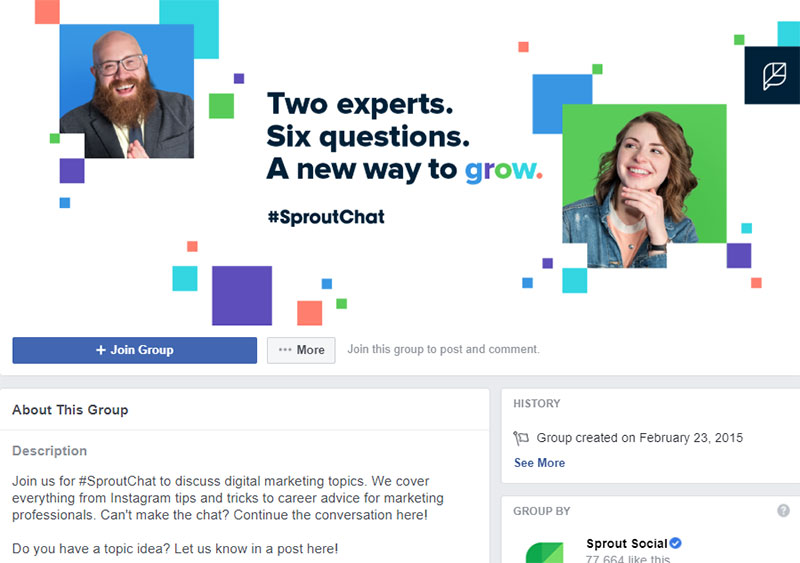
For Facebook, think community building. Use Facebook Groups to foster a sense of belonging and prompt interactive discussions.
Twitter thrives on brevity. Utilize trending hashtags and engaging visuals for better reach.
On LinkedIn, share thought leadership pieces. Regular posts mixed with early-morning updates keep your brand top of mind.
Instagram? It’s all about the aesthetics. Invest in high-quality visuals and consistent branding. Use stories for a behind-the-scenes look, showcasing a more personal side.
Infographics
Advantages of visual content
Why settle for words when a picture paints a thousand of them? Infographics are eye-candy with a purpose. They distill complex data into digestible bites.
It’s like taking a heavy report and transforming it into an engaging visual story.
This not only makes information accessible but also shareable. Think about that last time a killer infographic got you double-tapping on Instagram or re-tweeting.
The advantage? Visual content is 40 times more likely to be shared on social media. It’s engaging, memorable, and effective. Plus, when combined with SEO optimization, your infographics become powerful assets in driving organic traffic.
Tips for creating compelling infographics

Start with the story. What message are you conveying? Use clear and concise data visualization techniques. Keep it clean—minimalistic designs work wonders. Use compelling colors and fonts to guide the eye.
Tools like Canva or Piktochart can make design simple. Optimize visuals with keyword-rich file names and alt texts.
Don’t forget distribution—share on social media platforms, embed in blog posts, distribute through email newsletters. Maximize reach by collaborating with influencers for additional traction.
Ebooks
Long-form content for in-depth information
EBooks are the heavyweight champions of content. When you need to provide in-depth information, nothing beats long-form content.
Imagine a comprehensive guide that provides value from cover to cover. It positions your brand as a thought leader.
From detailed analyses to step-by-step guides, an eBook is like a deep dive. People turn to eBooks for serious content consumption—be it on digital marketing, SEO, or even niche topics like buyer personas.
Effective ebook marketing strategies
Creating the eBook is just the beginning. Marketing it effectively takes it to the next level. Landing pages dedicated to your eBook can help capture leads. Use captivating CTAs in blog posts and social media to drive downloads.
Collaborate with influencers for co-promotion. Use email newsletters to alert your subscribers. Employ SEO tools for keyword-rich descriptions and titles.
Don’t forget the power of offering limited-time freebies or discounts to add urgency and boost downloads.
Paid Advertising
The Role of paid content in a strategy
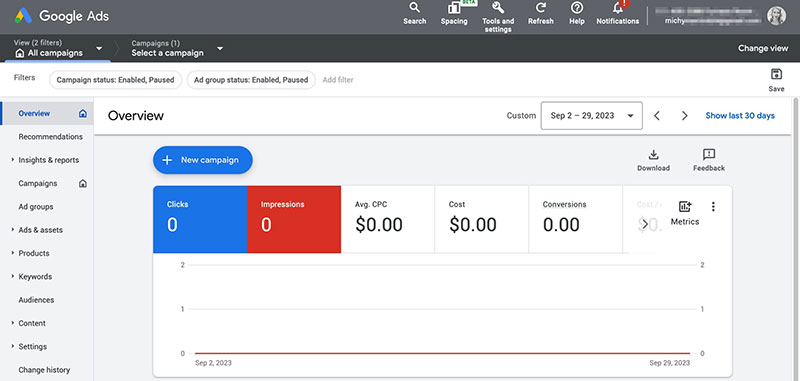
Paid content is the accelerator. While organic reach is essential, paid advertising ensures your content gets immediate visibility.
Imagine a well-placed Google Ad or a promoted Twitter post. These paid avenues can introduce your eBook or infographic to a wider audience overnight.
Paid ads are great for lead generation. You target potential customers who are already looking for what you’re offering. Social media platforms like Facebook, Instagram, and LinkedIn provide hyper-targeted ad options.
Optimizing ROI from paid campaigns
ROI is the ultimate goal. Tracking metrics is crucial – impressions, clicks, conversions. Utilize platforms like Google Analytics to gauge performance. Split-test different ad copies and visuals. Adjust based on what resonates most.
Time your ads well. A snazzy video ad during a high-traffic time drives more engagement. Use A/B testing to find out what works best.
Optimize bids to avoid overspending and maximize return. Fine-tune targeting – get specific with demographics, interests, behaviors.
How Content Marketing Works

Awareness Stage
Creating content to attract new audiences
Ah, the first spark – the Awareness Stage. This is where you captivate the wandering eyes of new audiences. It’s casting a wide net with blogs, infographics, and engaging social media updates.
The goal? Grab attention, provide value, and make them curious about your brand. Think top-of-the-funnel material here.
Crafting a share-worthy infographic or a slick video that answers a burning question in your industry can drive traffic like mad. At this stage, don’t sell – just attract. Think educational content, think broad appeal.
Examples of awareness stage content
Let’s be vivid. Imagine your audience scrolling through their Twitter feed and stumbling upon a snappy infographic on “Rising Trends in Digital Marketing”. Maybe it’s a YouTube tutorial about setting up an effective content marketing strategy. Or perhaps a blog post discussing…
What is Content Marketing?
These are not hard sells; they’re soft hooks, drawing people in to learn more.
Consideration Stage
Educating potential customers
Now they know you exist. Great. But the journey has just begun. In the Consideration Stage, you’re not just a name – you’re a guide. You educate, build trust, and deepen the relationship. Here, dive into the nitty-gritty details.
Create ebook guides, host webinars, or write in-depth case studies. Your audience is comparing options and trying to understand how you fit into solving their problems.
Types of content for consideration stage
Picture potential customers downloading an eBook, like “The Ultimate Guide to Content Management Systems (CMS)”. Or maybe they join a webinar on “How to Use Analytics Tools for Better SEO”. They might also read a detailed blog series on keyword research.
These content formats dig deeper, provide more value, and showcase your expertise. They’re not just consuming – they’re considering.
Decision Stage
Convincing prospects to make a purchase
Finally, we arrive at the Decision Stage. This is where your content needs to be persuasive. It’s time to convince. Address objections, highlight benefits, and showcase proof of success. Think testimonials, product demos, and comparative articles.
Your potential customers are ready to be gently nudged over the edge. Demonstrate how your product or service is the ultimate solution in their journey.
Effective content types for decision stage
Imagine a landing page with a compelling case study showing how your services increased a client’s ROI by 50%. Or a crisp video demo breaking down the user-friendly interface of your software.
A FAQ page addressing common concerns works wonders. Testimonials sprinkled throughout your site, showcasing satisfied customers, can tip the scales in your favor.
Developing a Content Marketing Strategy

Understanding Your Audience
Identifying target demographics
First thing’s first: who are we talking to? Get granular with your target demographics. Age, gender, profession, interests. Picture them clearly.
Are they the millennial entrepreneur or the seasoned executive? Knowing your audience like the back of your hand sets the stage for everything.
Conducting audience research
Data-driven decisions all the way. Dive into audience research. Use tools like Google Analytics and social media insights.
Surveys, interviews, buyer personas – the works. Grasp their pain points, desires, and online behaviors. What keeps them up at night? What solutions are they hunting?
Content Planning and Creation
Setting content goals and objectives
Set your compass. Are you after brand awareness or lead generation?
Maybe nurturing customer loyalty. Pin down specific, measurable goals. The clearer the objective, the sharper the strategy.
Creating a content calendar
A well-oiled machine needs a blueprint. Enter: the content calendar. Plan not just for the next week but months ahead.
Blog posts, videos, social media updates. Map out everything. Ensure variety and consistency. Adjust as you go.
Crafting high-quality content
The crux of the matter: content itself. Bring the A-game when crafting high-quality content. Authentic. Engaging. Valuable.
Use LSI keywords naturally in your text. Stories work wonders – make the audience feel something. Blend in visuals, infographics, and compelling copy. Nail the tone.
Distribution and Promotion
Channels for content distribution
Think broad yet targeted. Distribute where your audience hangs out. Social media platforms (Facebook, Instagram, LinkedIn), email newsletters, blogs – each has a role.
Don’t overlook niche forums and online communities.
Promoting content effectively
Promotion isn’t a one-off; it’s a dance. Post, re-post, and then some. Leverage SEO tools for better visibility.
Collaborate with influencers for wider reach. Use paid advertising if it aligns with your goals. Test different times and formats to find what sticks.
Measurement and Analysis
Key performance indicators (KPIs)
Numbers. Metrics. KPIs. Pinpoint what matters – organic traffic, conversion rates, bounce rates, social shares. These indicators tell you if you’re shooting in the dark or hitting bullseye.
Tools for tracking content performance
Leverage the powerhouses. Google Analytics, Semrush, Ahrefs. These tools offer insights into every nook and cranny. See where visitors come from, how they interact, and what converts. Stay informed.
Analyzing results to refine strategy
Data in hand, dissect and re-strategize. What worked? What flopped? Learn from each piece of content. Tweak your tactics.
Maybe more video content, less infographics. Adapt. Optimize. Reinvent. Success in content marketing is a cycle of continuous improvement.
Tools and Resources for Content Marketing
Content Management Systems (CMS)
Overview of popular CMS platforms
Think of a CMS like a swiss-army knife for your website. WordPress is the behemoth – flexible and robust.
Then there’s HubSpot, tailor-made for those craving integrated marketing tools. Wix and Squarespace are the sleek, user-friendly alternatives. Choice overload? Maybe. But options ensure you find the perfect fit.
Choosing the right CMS for your needs
Your needs should shape your choice. Want endless customization? WordPress has you covered with its myriad plugins.
Seeking an all-in-one inbound marketing solution? HubSpot.
If ease-of-use is key, platforms like Wix and Squarespace have intuitive drag-and-drop interfaces.
Content strategy and future growth – keep them in mind.
SEO Tools
Importance of SEO in content marketing
Imagine a library without a catalog. That’s your website without SEO. Search engine optimization is crucial – it makes your content discoverable.
It’s the bridge connecting your masterpiece to the readers hunting for it. Valuable content needs organic traffic. That’s non-negotiable.
Recommended tools for SEO optimization
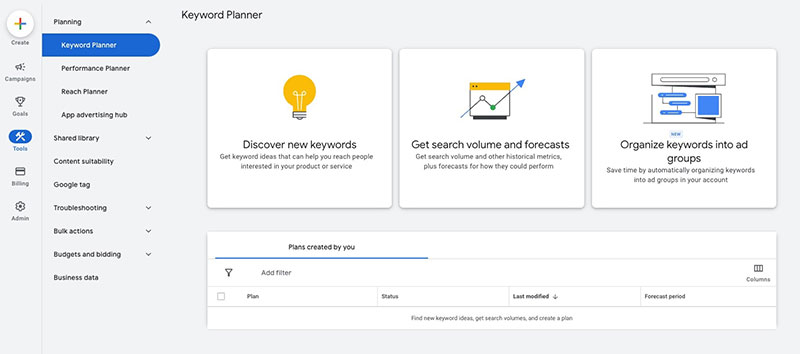
Ahrefs and Moz offer in-depth backlink analysis and keyword research. Need an all-rounder? SEMrush.
For on-page SEO tweaks, Yoast SEO (a WordPress staple) guides you like a personal mentor.
Tools like Google Keyword Planner help in finding the golden nuggets of keywords while LSIGraph enriches your content with relatable terms.
Analytics Tools
Monitoring and measuring content success
So, your content is out there. Now what? Measure. Analyze. Tweak. Analytics tools give you the pulse of your audience.
See who’s visiting, how long they stay, and what they engage with. Data is your best friend here.
Best analytics tools for content marketers
Google Analytics – the gold standard. It tracks everything from user demographics to behavior flow.
For a more visual approach, Looker Studio turns dry numbers into vivid, digestible reports.
Tableau is another heavyweight, handling complex data with ease.
And don’t overlook HubSpot Analytics if you’re already in their ecosystem – seamless integration is its charm.
Collaboration and Workflow Tools
Tools to streamline content creation
Creating content isn’t a lone ranger’s game.
Tools like Trello and Asana streamline your tasks, offering clear visibility of progress.
Keep things organized with editorial calendar tools like CoSchedule.
Then there’s Grammarly, your content’s editor-in-chief, refining and perfecting your prose. It’s collaboration with clarity.
Managing team collaboration and workflows
Several hands make light work, but only if they’re coordinated.
Slack is your virtual office, keeping real-time conversations fluid. Trello’s boards and Asana’s tasks organize the chaos into a symphony.
Tools like Google Workspace offer seamless document collaboration – essential for crafting that winning ebook or interactive infographic. Managing workflows becomes child’s play.
FAQ On Content Marketing
How does content marketing drive conversions?
Content marketing nurtures leads by providing valuable information throughout the marketing funnel. From initial awareness with blog posts to deeper insights via whitepapers, it builds trust.
This trust translates to higher conversion rates as prospects move closer to making a purchase decision.
What types of content are used in content marketing?
Blogs, videos, infographics, podcasts, webinars, whitepapers, and eBooks. Different content types serve different purposes. Blog posts might drive SEO, while webinars can foster deeper engagement. Pick your arsenal based on your content strategy and target audience.
Why is SEO important in content marketing?
SEO is critical as it drives organic visibility. Proper integration of keywords and quality backlinks enhance your site’s ranking in search engines.
Google Analytics helps measure effectiveness, ensuring that your content is actually being seen and engaged with, ultimately guiding users down the customer journey.
What role does social media play in content marketing?
Social media is a powerful content distribution channel. Facebook, LinkedIn, and Instagram amplify reach and engagement.
They provide platforms to share and promote your content, driving brand awareness and increasing audience engagement. Use these channels to amplify your voice and drive traffic back to your main content.
How do you measure the success of content marketing?
Success is measured through various engagement metrics, often tracked via Google Analytics. These indicators include conversion rates, bounce rates, and organic traffic.
The ultimate metric is ROI—understanding if the time and resources invested are delivering measurable business outcomes.
What’s the difference between content marketing and traditional marketing?
Content marketing focuses on creating valuable, engaging content to build trust and guide users. Traditional marketing often relies on direct promotions and advertisements.
The former nurtures long-term relationships; the latter usually seeks immediate results. Both can coexist in a well-rounded digital marketing strategy.
How do you develop a content strategy?
Start by defining your value proposition and understanding your target audience. Map out a content calendar, select appropriate content types, and identify your distribution channels.
Use tools like HubSpot and SEMrush for research and planning. Ensure your strategy aligns with overall business objectives and marketing goals.
What is inbound marketing and how does it relate to content marketing?
Inbound marketing attracts visitors by providing valuable content, thereby earning their interest rather than buying it.
Content marketing is a crucial component, focusing on creating and disseminating content that appeals to potential customers. Both aim to attract, convert, close, and delight customers.
How can content marketing improve customer loyalty?
Through consistent, valuable content, you build trust and authority. Satisfied customers who find your content helpful are more likely to stay loyal.
Case in point: case studies and customer testimonials can reinforce trust, while regular updates via email marketing keep your brand top-of-mind.
Conclusion
So, what is Content Marketing? It’s the backbone of a robust digital marketing strategy, designed to engage and convert your target audience through valuable and relevant content.
Crafting a well-thought-out content strategy leverages various forms of media, be it blogs, videos, or webinars, to address diverse customer needs and stages in the customer journey.
By focusing on organic traffic through smart use of SEO and keyword research tools like Google Analytics and SEMrush, you not only attract but retain a devoted audience. This approach nurtures leads, builds brand awareness, and ultimately drives conversion rates.
Let’s not forget, content marketing transcends mere promotion—it’s about storytelling and thought leadership. With the right mix of content types and meticulous distribution channels, you elevate your brand in a crowded marketplace.
Implement these insights, and watch your engagement metrics soar, validating your efforts with impressive ROI.





